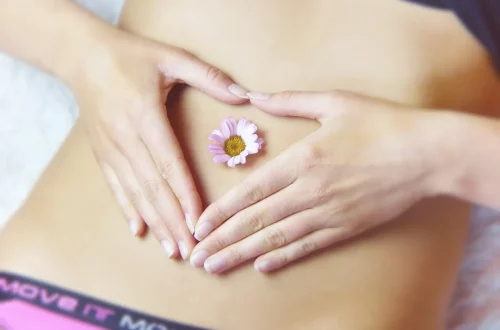
Unlock Youthful Skin with Ultherapy Skin Tightening Treatments
Achieving youthful, vibrant skin is a desire shared by many, and with the advancements in aesthetic medicine, there are now more options than ever to help maintain a youthful appearance. Among these treatments, Ultherapy has gained considerable attention for its non-invasive approach to skin tightening and rejuvenation. This innovative procedure utilizes ultrasound technology to stimulate collagen production deep within the skin, helping to lift and tighten sagging areas without the need for surgery or extensive downtime.
As we age, our skin undergoes various changes, including the loss of elasticity, the development of fine lines, and sagging. Factors such as sun exposure, environmental pollutants, and lifestyle choices can exacerbate these issues, making it essential to seek effective solutions. Ultherapy stands out as a leading treatment option, providing noticeable results with minimal disruption to daily life. Whether you’re looking to refresh your appearance before a special occasion or simply wish to maintain your skin’s firmness over time, understanding the benefits and process of Ultherapy can empower you to make informed decisions about your skincare journey.
Understanding Ultherapy: How It Works
Ultherapy is a non-surgical ultrasound treatment that targets the layers of skin typically addressed in cosmetic surgery. It harnesses the power of ultrasound technology to stimulate collagen production, which naturally diminishes as we age. During the procedure, a handheld device delivers ultrasound energy to the deeper layers of the skin, promoting tissue rejuvenation without harming the outer layer.
The key to Ultherapy’s effectiveness lies in its ability to penetrate the skin at different depths, allowing practitioners to tailor the treatment to the specific needs of each patient. The ultrasound energy heats the targeted tissue, prompting the body’s natural healing response. This process encourages the production of new collagen, which gradually lifts and tightens the skin over the following months.
One of the significant advantages of Ultherapy is that it requires no downtime. Patients can return to their daily activities immediately after the treatment. While some may experience mild redness or swelling, these effects usually subside quickly. Results can often be seen within a few weeks, with continued improvement occurring for up to six months as the new collagen builds.
Ultherapy is FDA-cleared and has been used successfully in various areas of the body, including the face, neck, and décolletage. This versatility makes it a popular choice among those seeking to combat signs of aging without resorting to invasive surgical options.
The Benefits of Non-Invasive Treatments
In recent years, there has been a significant shift towards non-invasive aesthetic treatments, and for good reason. Non-invasive procedures like Ultherapy offer numerous benefits that appeal to individuals looking for effective skincare solutions without the risks associated with surgery.
Firstly, one of the most compelling advantages of Ultherapy is the minimal recovery time. Traditional surgical facelifts often require weeks of downtime, during which patients must manage swelling, bruising, and discomfort. In contrast, Ultherapy allows individuals to undergo treatment and return to their regular routines almost immediately. This convenience is particularly appealing for those with busy lifestyles who cannot afford extended recovery periods.
Moreover, non-invasive treatments typically involve less risk of complications. Surgical procedures can lead to infections, scarring, and other adverse effects. With Ultherapy, the use of ultrasound technology reduces the likelihood of such issues, providing a safer alternative for skin rejuvenation.
Another benefit is the gradual nature of the results. Unlike some cosmetic treatments that offer instant changes, Ultherapy produces subtle improvements over time as collagen builds. This gradual enhancement can appear more natural, as it mimics the body’s natural aging process rather than delivering an abrupt change in appearance.
Additionally, non-invasive treatments are often more cost-effective than surgical options. While prices can vary based on location and practitioner experience, Ultherapy generally presents a lower financial commitment compared to traditional surgical procedures. This affordability allows individuals to invest in their skincare without breaking the bank.
Who Is an Ideal Candidate for Ultherapy?
Ultherapy is designed for individuals who are looking to improve skin laxity without undergoing surgery. It is particularly effective for those experiencing mild to moderate sagging in areas such as the brow, chin, neck, and décolletage. However, determining if Ultherapy is the right choice for you involves several factors.
Aging is a natural process, and everyone experiences it differently. Ideal candidates typically begin seeking treatment in their late 30s to early 60s. At this age, patients may notice early signs of sagging skin and may be looking for a way to enhance their appearance without the commitment and risks associated with surgery.
It’s important to have realistic expectations regarding the results of Ultherapy. While many individuals achieve significant improvements, the treatment is not a substitute for a facelift. Those seeking dramatic changes may need to consider surgical options. A thorough consultation with a qualified practitioner can help set realistic goals and determine the best approach for individual skin concerns.
Individuals with certain medical conditions or skin types may require additional consideration before undergoing Ultherapy. For example, those with active skin infections or certain autoimmune disorders may need to postpone treatment. A licensed practitioner will assess your medical history and skin condition to ensure a safe and effective treatment plan.
Ultimately, the best way to determine if you are an ideal candidate for Ultherapy is to consult with a healthcare provider who specializes in aesthetic treatments. They can provide personalized recommendations based on your unique needs and desired outcomes.
Aftercare and Maintenance for Optimal Results
Following an Ultherapy treatment, there are a few aftercare practices that can help enhance and maintain your results. While Ultherapy itself requires minimal downtime, taking care of your skin post-treatment is essential for achieving the best possible outcome.
Immediately after the procedure, it is common to experience slight redness or swelling. These effects typically resolve on their own within a few hours. To support your skin’s recovery, it’s advisable to avoid excessive sun exposure and to use a broad-spectrum sunscreen diligently. Protecting your skin from harmful UV rays is crucial since sun damage can accelerate the aging process and diminish the benefits of your treatment.
Staying hydrated is another key factor in maintaining skin health. Drinking plenty of water helps to keep your skin plump and may enhance the overall appearance of your complexion. Additionally, incorporating a good skincare regimen can further support the results of Ultherapy. Look for products that promote hydration and collagen production, such as serums containing hyaluronic acid and retinol.
While Ultherapy results can last for a year or more, individual factors such as age, skin condition, and lifestyle choices will influence longevity. Many patients choose to undergo touch-up treatments to maintain their results over time. Regular consultations with your practitioner can help you establish a maintenance plan that aligns with your goals.
As with any aesthetic treatment, it’s important to prioritize self-care and listen to your body. Should you experience any unusual symptoms or concerns post-treatment, reach out to your healthcare provider for guidance.
**Disclaimer:** This article is for informational purposes only and does not constitute medical advice. For any health concerns or questions regarding treatment options, please consult a qualified healthcare professional.




